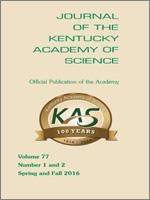Switchgrass (Panicum virgatum L.) has been identified as a versatile and broadly useful bioenergy feedstock, with potential for use in coal-fired power plants as well as ethanol production. However, in order for switchgrass use to markedly influence energy production, conversion to this grass species must occur at a large scale. Little is known about the potential ecological consequences of widescale conversion of land to switchgrass. This study was conducted to identify potential effects of switchgrass planting on small mammal populations. An abandoned perennial cool season grass hayfield in central Kentucky was subdivided into two fields; one field was planted with switchgrass and the control field was maintained as an unmanaged hayfield. Small mammal relative abundance was quantified using a tracking method through the third year following switchgrass planting. Small mammal relative abundance was greater in the switchgrass field than in the control field. Vegetative community analysis showed the control field was dominated by tall fescue, suggesting that thickness of stand and/or fescue toxicity may have been a factor in reduced small mammal abundance. These data suggest that conversion of abandoned old fields to switchgrass will not have a negative effect on small mammal populations. Further research should target potential mechanisms for this variation in small mammal relative abundance, as well as other species in the community which may be affected by conversion to switchgrass.
How to translate text using browser tools
1 January 2016
Converting Abandoned Hayfield to Switchgrass Increases Small Mammal Relative Abundance
Kenton L. Sena,
Ben Brammell,
S. Ray Smith
ACCESS THE FULL ARTICLE





